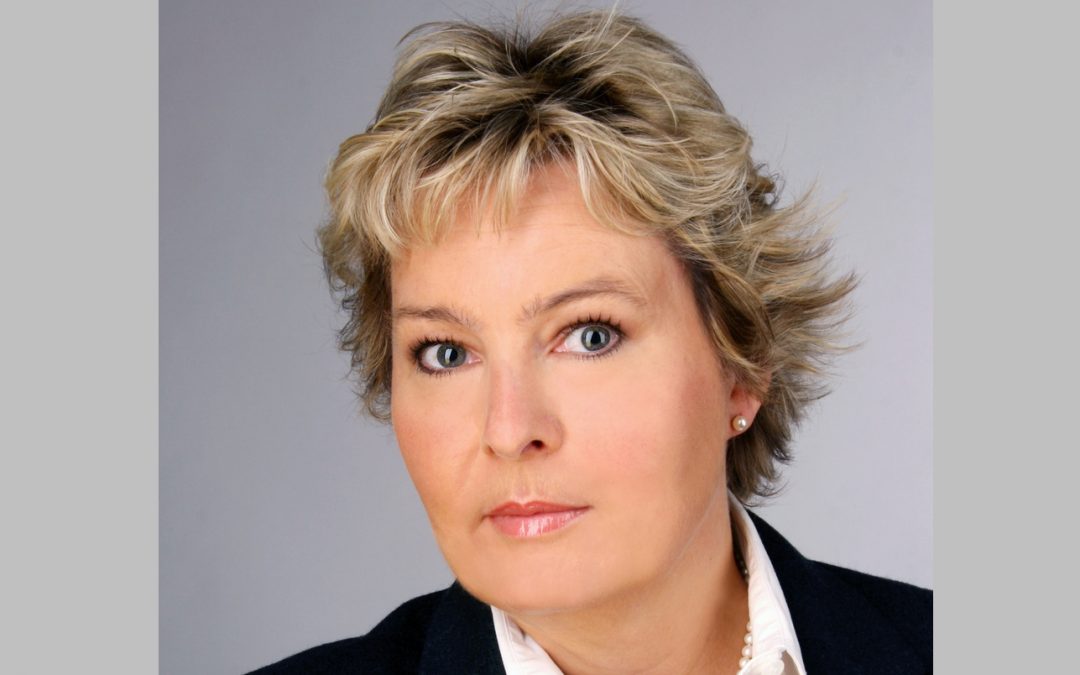Dr. Judith Kerschbaumer heads the labor market and social policy department at ver.di federal administration. She deals intensively with the topic of old-age provision and knows the difficulties many women face in building adequate old-age provision themselves. She is currently working on a social partner model for the service industry, which would then be the first collective agreement social partner model. We talk to her about the topics of old-age provision for women, guarantees and the social partner model.
Dr. Kerschbaumer, as a representative of the service union ver.di, you deal intensively with the topic of old-age provision. What do you notice when you look specifically at women's pension notices?
Unfortunately, women's pensions are still significantly lower than those of men. New retirees currently receive an old-age pension of around EUR 785, while new retirees receive around EUR 1,130, after deducting health and long-term care insurance contributions before taxes. [Figures from: Pension insurance in time series October 2020, pp. 118/119]. The reasons for this are to be found in the high part-time employment and the mostly still lower wages of typical female occupations.
What is the average company pension for women and how high is it for men?
Here, too, women clearly lag behind men. While every third pensioner receives a company pension averaging 563 euros net, today only every fourth pensioner has a company pension averaging 274 euros net. In the new federal states, only one in five pensioners receives a net company pension averaging EUR 148. [Figures from the 2020 Pension Fund Report, Table B.4.2.]
You demand more initiative on the part of citizens in structuring their old-age provision. What should be done to encourage people's interest and thus initiative in matters of old-age provision?
The most important thing is to develop an interest in later care in old age and to obtain information from a young age. The planned "cross-provider pension information", which is intended to provide information on all forms of retirement provision, can be an important aid in this regard. In the company, the employer should be asked to offer a company pension scheme and at least contribute significantly to financing it.
It is not always guaranteed that advice on the topic of old-age provision, if it comes from the product providers themselves, is optimal, as sales aspects often also play a role. Where can women get advice on how to optimize their company pension scheme?
At consumer protection organizations, their works councils and with the statutory pension insurance.
You advocate securing living standards from two pillars. That is why you want to promote the spread of company pension schemes. The fund industry is more of the 3rd pillar. Simply building up a financial cushion for old-age provision with funds is also an option. In your opinion, what are the advantages and disadvantages of private provision via investment funds?
Only in the second pillar, the company pension scheme, can employers participate in the financing of the later company pension or fully finance the build-up. In addition, there are attractive state funding opportunities in the company pension scheme. With a monthly salary of up to EUR 2,575, the tax office reimburses 30% of the employer's expenses for the company pension of his / her employees. This is of particular benefit to women.
In the third pillar, i.e. with private provision, everyone saves on their own.
In the case of company pension schemes in particular, the topic of mandatory membership comes up again and again. Should one make a compulsory system out of the voluntary system?
An obligation only makes sense if there is also an obligation on the employer to contribute to the financing. Compulsory membership is of little use to women who cannot spare the money to secure themselves because they need every penny for their daily lives.
You advocate greater involvement of employers in the financing of company pension schemes. What is the best way to build a pension for people who do not have an employer? So e.g. self-employed, unemployed, housewives?
The purpose of a pension is always to replace lost wages in old age. So anyone who does not receive a wage in working life has a source of income that will hopefully not cease in old age. That is why housewives in particular should consider working. Because marriage is usually not a reliable safeguard for old age. For the self-employed, as well as inclusion in the statutory pension insurance, which unfortunately no longer occurred in this legislative period, the establishment of a company pension should be made possible. Unemployed people receiving unemployment benefit I are covered by the statutory pension insurance. Since phases of unemployment should only be limited in time, a company pension can contribute to a later company pension during the employment phases.
Retirement at 68, 69 or 70 is currently being debated quite emotionally. How do you see the increase in the retirement age? Is it simply a demographic necessity, or are there ways to avoid it?
There is no need to postpone the retirement age any further, especially since many insured persons have not yet reached the current statutory retirement age. We know that due to the upcoming retirement of the baby boomers, the statutory pension is facing major financing challenges. But these can be mastered. On the one hand, through a moderate increase in pension insurance contributions, borne by employees and employers through higher federal subsidies. Everyone must share in the cost of aging society. Poverty in old age is not an inevitable threat, but only when employers and the state evade their responsibility.
With the Company Pension Strengthening Act (BRSG), the legislature enabled the social partner model in 2018, which no longer contains any fixed guarantees. The promised pension will be softer. The unions are often accused of having a stomachache if the guarantees are no longer available. How do you personally see the loss of hard guarantees?
Guarantees are not the only way to achieve security. Rather, security can also be achieved through new buffer mechanisms that mitigate the volatility of the pension assets and are financed by security contributions from employers. The exclusively collective bargaining agreement of social partner models (SPM) in collective agreements and the associated “implementation and control” of capital investments by the social partners also limit the associated risks. Employees can only trust this type of commitment and negotiate fair framework conditions on an equal footing if providers (insurance companies and pension institutions) and employers have a strong representation of employees' interests. This counterbalance can only be found by trade unions in the context of collective bargaining. In addition, collective bargaining exclusivity strengthens collective bargaining coverage, as it creates incentives for employers to conclude collective agreements.
Said company pension strengthening law came into force 3 years ago, but so far there is no industry-wide social partner model. You're working on one. When do you expect it?
Later this year.
In your opinion, do sustainability and ESG aspects belong in the capital investment of company pension schemes?
Absolutely!
Thank you very much for the interview!
In cooperation with the social association SoVD, ver.di will soon be organizing its 16th women's pension conference. It will take place in digital form on July 6, 2021. Dr. Judith Kerschbaumer will report on the subject of "How do women get more pensions?"
Here for registration: for a LIVESTREAM on
Tuesday, 6. July 2021 , 10.00 – 15.30 Uhr



